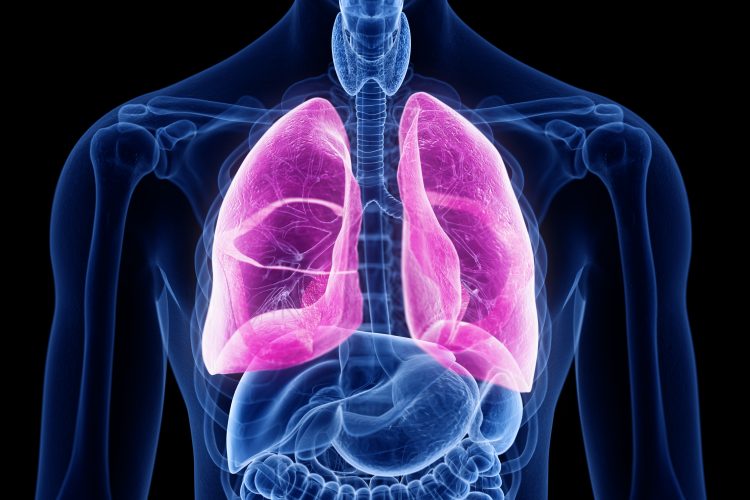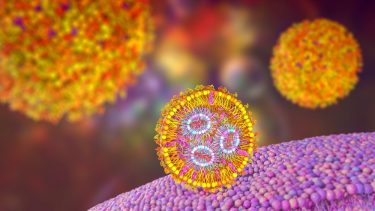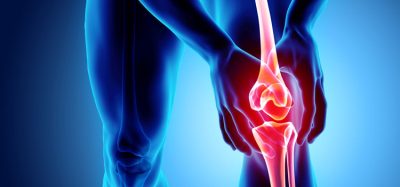Revolutionary nanoparticles enable gene-editing in lungs
Posted: 26 April 2023 | Drug Target Review | No comments yet
This article outlines the development of a new type of nanoparticle that can perform gene-editing in the lungs. Scientists from MIT and the University of Massachusetts Medical School have collaborated to create this Ribonucleic acid (RNA) delivery particles, which have the potential to revolutionise the treatment of lung diseases such as cystic fibrosis.


Scientists from the Massachusetts Institute of Technology (MIT) and the University of Massachusetts Medical School (UMass), US, have collaborated to create a novel type of nanoparticle that can deliver messenger RNA that encodes for beneficial proteins to the lungs. Gene-editing methods allow researchers to modify DNA, resulting in alterations in physical characteristics such as eye colour and susceptibility to diseases. To achieve this, scientists utilise various technologies that function similarly to scissors, precisely cutting the DNA at a particular location. 1
RNA-delivery particles have the potential to revolutionise the treatment of lung diseases such as cystic fibrosis. The researchers hope that this new technology could lead to the development of more effective treatments for these conditions, which can be debilitating and often life-threatening. With further research, these innovative nanoparticles could represent a major breakthrough in the fields of gene therapy and personalised medicine.
The study appears in Nature Biotechnology. The researchers are optimistic that, with additional improvements, these nanoparticles could be used as an inhalable therapy to treat a range of lung ailments, including cystic fibrosis.
“This is the first demonstration of highly efficient delivery of RNA to the lungs in mice. We are hopeful that it can be used to treat or repair a range of genetic diseases, including cystic fibrosis,” said Daniel Anderson, a Professor in MIT’s Department of Chemical Engineering and a member of MIT’s Koch Institute for Integrative Cancer Research and Institute for Medical Engineering and Science (IMES).
In a study of mice, Anderson and his colleagues used the particles to deliver mRNA encoding the machinery needed for CRISPR-Cas9 gene-editing. That could open the door to designing therapeutic nanoparticles that can snip out and replace disease-causing genes.
Lung-targeting nanoparticles
Using messenger RNA as a therapeutic for gene-based diseases has been challenging due to difficulties in delivering it to specific parts of the body without unwanted effects. Injected nanoparticles tend to accumulate in the liver, which is why clinical trials are currently evaluating mRNA treatments for liver diseases. RNA-based COVID-19 vaccines are also effective, with mRNA encapsulated in lipid nanoparticles that protect it from being broken down too soon and help it enter target cells. However, researchers have faced challenges in targeting the lungs, where many genetic diseases, such as cystic fibrosis, originate. The development of the new nanoparticles by MIT and UMass Medical School engineers could offer an inhalable treatment for these lung diseases, bringing new hope for patients with genetic conditions.
A few years ago, Anderson’s team began developing particles that could better deliver therapeutic mRNA to the epithelial cells of the lungs. In 2019, they successfully created nanoparticles made of polymers that could deliver mRNA encoding a bioluminescent protein to lung cells. These particles were easier to aerosolise for inhalation into the lungs because they were made of polymers rather than lipids. However, the team needs to conduct more research to increase the effectiveness and practicality of these particles for therapeutic purposes.
This could open the door to designing therapeutic nanoparticles that can snip out and replace disease-causing genes.
In their recent research, the MIT and UMass Medical School engineers focused on developing lipid nanoparticles that could specifically target the lungs. These particles consist of molecules that have two distinct parts, a positively charged headgroup, and a long lipid tail. The positively charged headgroup is vital in helping the particles interact with the negatively charged mRNA, and it also assists the mRNA in escaping from the cellular structures that engulf the particles after they enter the cells. This approach represents a significant improvement in the delivery of mRNA to the lungs and could have major implications for treating a wide range of lung diseases.
The researchers devised 10 various chemical structures for the lipid tails of the particles and 72 different headgroups. The lipid tail design helps the particles pass through the cell membrane, while the headgroup’s positive charge helps interact with negatively charged mRNA and helps the mRNA escape from cellular structures after particles enter the cells. Through screening different combinations of these structures in mice, the researchers identified the most effective combinations to reach the lungs.
Efficient mRNA lung delivery
The researchers conducted additional tests on mice to assess the efficacy of the particles in delivering mRNA encoding CRISPR-Cas9 components. They targeted a stop signal that was genetically encoded into the animals’ lung cells, and when that stop signal was removed, a gene for a fluorescent protein was activated. By measuring this fluorescent signal, the researchers were able to determine the percentage of cells that successfully expressed the mRNA.


The researchers found that after administering one dose of mRNA, approximately 40% of the lung epithelial cells were transfected. Increasing the dosage to two and three doses resulted in transfected cells of more than 50 percent and 60 percent, respectively. The most important targets for treating lung diseases are club cells and ciliated cells, and the study found that about 15 percent of each type of cell was successfully transfected.
“This means that the cells we were able to edit are really the cells of interest for lung disease,” said Bowen Li said, an Assistant Professor at the University of Toronto. “This lipid can enable us to deliver mRNA to the lung much more efficiently than any other delivery system that has been reported so far.”
The newly developed lipid nanoparticles for mRNA delivery in the lungs have several advantages over other approaches. One major advantage is that these particles break down quickly, which reduces the risk of inflammation and allows for repeated doses. In contrast, a modified adenovirus approach is very effective at delivering RNA but induces an immune response in the host, which limits its repeated use. The new lipid nanoparticles also can target specific lung cells and can be aerosolised for inhalation. Additionally, the particles have been shown to be effective at delivering CRISPR-Cas9 components designed to cut out a stop signal in genetically encoded lung cells.
In the current study, the researchers delivered the particles using intratracheal instillation, a method commonly used to simulate the delivery of medication to the lungs. However, the team is working to make the particles more stable so that they can be aerosolised and inhaled using a nebulizer, which would be a less invasive and more practical way of delivering the nanoparticles to the lungs. This would make the treatment more accessible to patients, especially those with chronic lung diseases such as cystic fibrosis.
The researchers aim to conduct further studies to test the efficacy of the lipid nanoparticles in delivering mRNA that can correct the genetic mutation in cystic fibrosis in a mouse model. They also plan to explore the potential of using these particles to develop treatments for other lung diseases like idiopathic pulmonary fibrosis and mRNA vaccines that can be administered directly to the lungs.
References:
1. What is genome editing? [Internet]. Genome.gov. [cited 2023Apr4]. Available from: https://www.genome.gov/about-genomics/policy-issues/what-is-Genome-Editing
Related topics
Disease Research, Drug Development, Drug Targets, Nanoparticles, Nanotechnology, Targets
Related conditions
Cystic fibrosis, Liver disease
Related organisations
Massachusetts Institute of Technology, University of Massachusetts Medical School
Related people
Daniel Anderson








